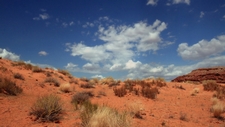Problem: Lack of Water in a Habitat

TEKS Objective
The student is expected to identify and explain a problem in his/her own words and propose a task and solution for the problem such as lack of water in a habitat.
Essential Understanding
The student knows that information and critical thinking, scientific problem solving, and the contributions of scientists are used in making decisions.
Science Background
Drought for Kids: National Drought Mitigation Center (website) - Navigate this website for a large collection of useful information related to what a drought is, how drought affects our lives, how people study drought, and how me can protect ourselves from drought. Includes a glossary and links to additional resources.
Drought for Kids
National Drought Mitigation Center, drought.unl.edu
Signature Lesson
Discovering Drought: Project WET (pdf) - A series of seven brief lessons describing climate conditions, cause and effect and conservation.
- Supporting Lessons
- Extensions
- Assessment Ideas
- Literature Connections
- Related
TEKS - Additional Resources
Supporting Lessons
Do Plants Need Water? Utah Education Network (website) - Plant lima beans at successively farther distances from a water source to observe the impact of water (or lack thereof) on plant growth. Focus on Investigation #1.
Elaboration Lessons and Extensions
Defining Drought: Science NetLinks (website) - Students examine the causes, characteristics and impacts of drought, and consider the larger issue of water usage. Includes assessment and extensions.
Defining Drought
Science NetLinks, www.sciencenetlinks.net
Global Water Supply Elementary School Curriculum: Water.org (pdf) - integrated unit on water use, lack of water and global outlook.
Global Water Supply Elementary School Curriculum
www.water.org
Assessment Ideas
Students create a public service announcement suggesting ways to protect the local wildlife and habitat during drought conditions. For example, the announcements might discuss or illustrate strategies for limiting water use.
Literature Connections
Drought (Wild Weather, 2nd Edition). Chambers, Catherine (ISBN-13: 978-1403495761)
Witness to Disaster: Droughts. Fradin, Judy and Dennis (ISBN-13: 978-1426303395)
Saving Water (Water All Around). Olien, Rebecca (ISBN-13: 978-0736836999)
Droughts (Disasters Up Close). Woods, Michael (ISBN-13: 978-0822565765)
Additional Resources
Drought Information for Kids: Delaware River Basin Commission (website) - Learn what droughts are, how to save water during a drought, and how droughts impact plants and wildlife.
Drought Information for Kids
Delaware River Basin Commission, www.state.nj.us
TEKS Navigation
Grade 2
Need Assistance?
If you need help or have a question please use the links below to help resolve your problem.

Comments